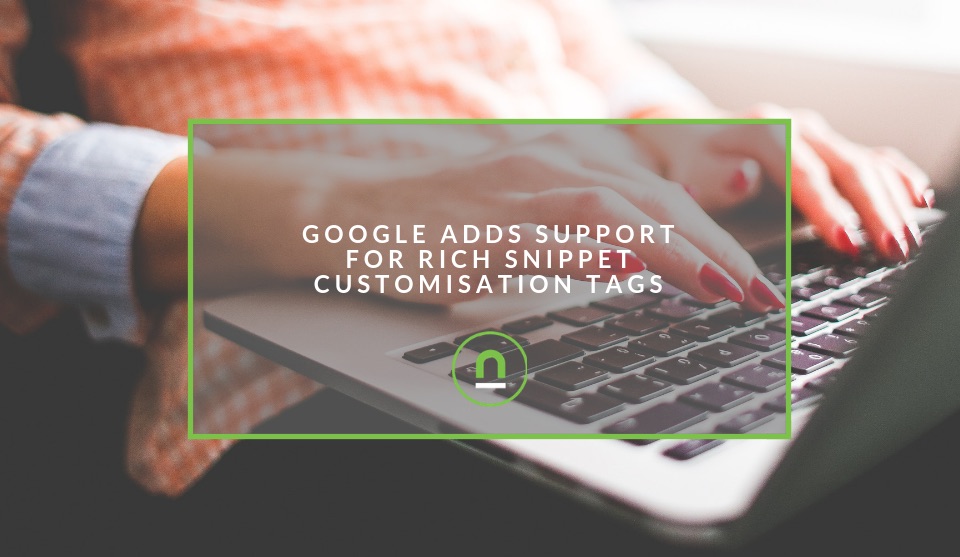Recent posts

nichemarket Advice
Why Video Production Companies Still Outshine AI
24 December 2025

Press Releases
Where You Can Find International Remote Jobs For South Africans
23 December 2025

Money Talks
Why Cross-Border Payments Are Slow, Tedious, and Expensive
17 December 2025

Money Talks
The Rise Of Trading Platforms In South Africa
16 December 2025
Popular posts
Extravaganza
Trending Music Hashtags To Get Your Posts Noticed
24 August 2018
Geek Chic
How To Fix iPhone/iPad Only Charging In Certain Positions
05 July 2020
Extravaganza
Trending Wedding Hashtags To Get Your Posts Noticed
18 September 2018
Money Talks
How To Find Coupons & Vouchers Online In South Africa
28 March 2019
Google Adds Support For Rich Snippet Customisation Tags
25 September 2019 | 0 comments | Posted by Che Kohler in nichemarket Advice
Google SERP's have become a rich media display over the last few years with all sorts of weird and wonderful markups finding their way into search results. Gone are the days of boring old text and link results. Now a search can provide you with additional information like video, images, instant answers, other questions, and so much more.
Top of the table of contents
Have you ever googled something and received an instant answer box above all the queries? These are known as rich snippets. Rich snippets are now a firm fixture of Google Search results pages, and none is more prominent than the "position zero" snippet. Position Zero is a rich snippet that sits above the top 10 listings and provides an instant answer for a specific search query.
As an SEO, we covert these spots and actively format out content to encourage these rich snippet listings within SERPs. While we could format our post to encourage snippets, we had little no control over what was displayed in search, until now.
Google allowing rich snippet configuration
Google is giving site owners the ability to customize how their content is previewed in search results.
By default, Google has always generated search snippets according to the users' queries and what types of devices they're using. However, there was previously no room for customization – it was only possible to allow a textual snippet or not allow one.
Now, Google is introducing multiple methods that allow for more fine-grained configuration of the preview content shown for web pages. These methods include using robots meta tags as well as a brand new type of HTML attribute. Here's more information about each of these methods.
Configuring search snippets with Robots Meta Tags
The content shown in search snippet previews can now be set using robots meta tags. The following robots meta tags can be added to an HTML page's, or specified via the x-robots-tag HTTP header:
- "nosnippet" – This is an existing option to specify that you don't want any textual snippet shown for a page.
- "max-snippet:[number]" (NEW) – Specify a maximum text-length, in characters, of a snippet for your page.
- "max-video-preview:[number]" (NEW) – Specify a maximum duration in seconds of an animated video preview.
- "max-image-preview:[setting]" (NEW) – Specify a maximum size of image preview to be shown for images on this page, using either "none", "standard", or "large".
The above robots meta tags can also be combined, for example:
New data-nosnippet HTML attribute Google is introducing an all-new way to limit which part of a page can be shown as a preview in search results.
The new "data-nosnippet" HTML attribute on span, div, and section elements can prevent specific parts of an HTML page from being shown within the textual snippet in search results.
In other words – if you want to prevent Google from giving away too much of your content in search results, this is the method you wish to use.
Here's an example:
Alan Shearer is the English Premier Leagues all-time top scorer
In this example, if someone were searching for a query like "EPL all-time top scorer," the HTML attribute would prevent Google from giving away the answer (Alan Shearer) in search results and encourage a user to click through to the site to get the answer.
Not a ranking factor
This update will only affect how snippets are displayed in search results. Google confirms these settings will have no impact on search rankings. Depending on how a site owner chooses to configure these settings, there may be an impact on CTR, which could then impact traffic. But that is not related to search rankings.
When do these changes come into effect?
Preview settings for robots meta tags will become effective in mid-to-late October 2019. It may take a week for the global rollout to be completed once it starts.
The data-nosnippet HTML attribute will be active later this year while there has been no specific timeframe was provided for that particular settings global go-live date.
Will these new changes affect how rich results are displayed?
Content in structured data that is eligible for display as a rich result will not be affected by any of these new settings. Site owners already have control over the content displayed in rich results by what they choose to include in the structured data itself.
How will these changes affect featured snippets?
Featured snippets depend on the availability of preview content.
So if you limit the preview content too heavily, it may no longer be eligible to be displayed as a featured snippet, although it could still be viewed as a regular snippet.
The minimum number of characters required for a featured snippet varies by language, which is why Google cannot provide an exact max-snippets length to ensure eligibility.
Can site owners experiment with snippet length?
Site owners can absolutely adjust these settings at any time. For example – if you specify a max-snippet length and later decide you'd instead display a longer snippet in search results, you can change the HTML attribute.
Google notes that these new methods of configuring search snippet previews will operate the same as other results displayed globally. If the settings are changed, then your unique preferences will be displayed in search results the next time Google recrawls the page.
Google will 100% follow these settings
These new settings will not be treated as hints or suggestions. Google will fully abide by the site owners preferences as specified in the robots meta tags or HTML attribute.
No difference between desktop and mobile settings
Preview preferences will be applied to both mobile and desktop search results. If a site has separate mobile and desktop versions, then the same markup should be used on both.
Additional resources for webmasters
These options are available to site owners now, but the changes will not be reflected in search results until mid-to-late October at the earliest. For more information, see Google's developer documentation on meta tags.
Why is Google giving us this new feature?
Google wants to provide a better experience to its searchers and while its AI snippet creation tool has done a fine job, not every answer works well within the confines of the snippet and it doesn't always quite display correctly. By giving webmasters a way to specify how these snippets should be displayed actively assist Google in providing better rich snippets and improve click-through.
Rich snippets configurations work the same way Google often creates its own meta description for links where the description isn't specified. So now that you can, you have active control over what users see and improve click-through rates.
Contact us
If you would like us to help set up your sites SEO or want to know more about digital marketing for your business, then don’t be shy we’ re happy to assist. Simply contact us
Are you looking to promote your business?
South African Business owners can create your free business listing on nichemarket. The more information you provide about your business, the easier it will be for your customers to find you online. Registering with nichemarket is easy; all you will need to do is head over to our sign up form and follow the instructions.
If you require a more detailed guide on how to create your profile or your listing, then we highly recommend you check out the following articles.
Recommended reading
If you enjoyed this post and have a little extra time to dive deeper down the rabbit hole, why not check out the following posts on schema and HTML markups.
- What Is FAQ schema And How Do You Use it?
- Google introduces schema markups for live streams
- Bing Now Supports JSON-LD Schema Markups
- Google Testing New Multiple Rating Featured Snippet
Tags: SEO, Organic Search, Rich Snippet
You might also like
Lost Mary Vape Flavors List By Durity Distribution
01 December 2025
Posted by Christine Lowe in Shopaholics
A Cyber Monday shopping guide to all the best Lost Mary Vape flavours available, brought to you by Durity Distribution in Idaho. Find the best vape f...
Read moreWhy Video Production Companies Still Outshine AI
24 December 2025
Posted by Che Kohler in nichemarket Advice
A review of traditional video production versus generative AI videos and why businesses might be tempted to go the cheaper route, but it might cost y...
Read more{{comment.sUserName}}
{{comment.iDayLastEdit}} day ago
{{comment.iDayLastEdit}} days ago
 {{blogcategory.sCategoryName}}
{{blogcategory.sCategoryName}}

